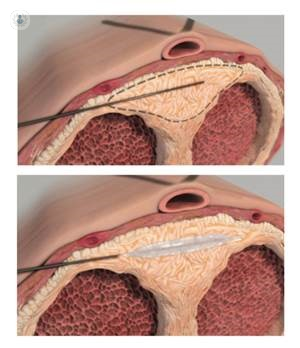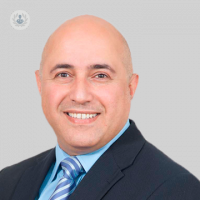Treating Peyronie’s disease
Autore:Peyronie’s disease (PD) is one of the most commonly underreported diseases affecting men. It causes penile pain and curvature during erections which makes sexual intercourse difficult and uncomfortable. It has a huge impact on men, not only at the physical level but emotionally, with 48% of men who have the condition being diagnosed with some form of clinical depression.
Urologist Mr Aza Mohammed talks about the possible causes of PD and if Xiapex is a viable treatment option.

What causes PD?
PD is caused by inflammation of the tunica albuginea, which is the outer layer of the penile cylinders (corpora cavernosa). This outer layer or sheath of elastic tissue stretches during an erection. Scar tissue called plaque forms inside the penis, resulting in a bent penis when erect.
The exact cause of inflammation is unknown but researchers believe that the plaques result from excessive scarring in susceptible patients following minor trauma during intercourse. PD can also be associated with some chronic conditions such as diabetes, hypertension and lipid abnormalities.
It’s also more common in men with Dupuytren’s contracture, an inflammatory condition involving the tendons in the hand.
What symptoms are related to PD?
Patients usually present with pain in the penis when the penis is erect in the early stages. When the penis is soft, there is usually no problem.
As the condition progresses, patients will feel a palpable lump in the penis and penile curvature during erection. Patients are usually recommended to bring photographic evidence of the curvature to their doctor upon consultation, so the doctor can offer an accurate assessment.
Treating PD
The principle of treating PD is to restore the function of the penis by correcting the curvature to enable penetration. One of the non-surgical methods of treatment is intralesional injection therapy, which involves injecting a substance directly into the Peyronie’s plaque.
Xiapex
This involves injecting an enzyme called collagenase into the PD plaque to dissolve the collagen fibres that largely make up the plaque. This will soften the plaque and reduce the degree of curvature.
The injection has been tested scientifically and has been proven to improve the degree of curvature. The success of initial clinical trials has granted Xiapex American FDA and European EMA approval.
However, for optimal results, it’s advised that only patients with a degree of curvature that’s less than 90o be selected for the procedure. Patients must also perform stretching exercises at least 3-4 times a week for treatment to be a success. Treatment can be repeated depending on how the patient responds to the treatment initially. A maximum of three injections should be carried out.

Is Xiapex better than surgery?
Xiapex is a better option than surgery for anyone with a degree of curvature less than 90 o, in that:
1. It’s an office-based procedure
2. Performed under local anaesthesia
3. Well tolerated with minimal side effects
4. With a short recovery time
5. Minimally invasive
Patients with severe and more complex curvatures should opt to have surgery.
If you think you might have Peyronie’s disease, consult a urologist like Mr Aza Mohammed.


